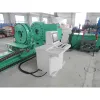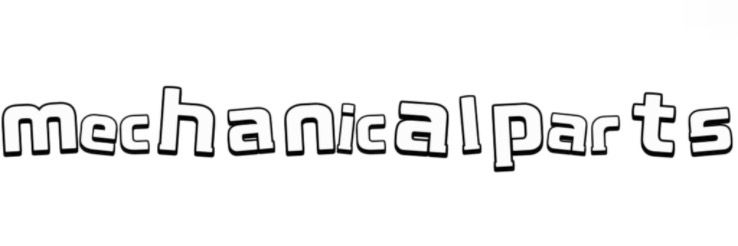How to Choose the Right Pipe Bending Machine? A Comprehensive Buying Guide
May. 14, 2025
A pipe bending machine is an essential piece of equipment in the metalworking industry, widely used in sectors such as automotive, home appliances, fitness equipment, architectural decoration, and shipbuilding. With a wide range of models and configurations available on the market, choosing a pipe bender that meets your needs and offers the best value for money can be challenging.
In this article, we’ll walk you through 18 critical factors to consider when selecting a pipe bending machine to help you make a well-informed decision.
1. Pipe Type: Determine the Shapes You’ll Be Bending
Different pipe shapes require specific tooling and configurations:
Round pipes: Most common and widely supported by all bending machines.
Square/rectangular pipes: Require suitable dies and clamping mechanisms.
Oval pipes: Need customized tooling; less commonly supported.
Special-shaped pipes or profiles: Such as T-beams, U-channels, H-beams, often need custom solutions.
Tip: Confirm the exact types of pipes you'll be working with to ensure compatibility with the machine and tooling.
2. Pipe Diameter Range: Minimum and Maximum Sizes
The machine’s capability should match your product specifications. For example, if you need to bend pipes from 10mm to 120mm in diameter, ensure the selected machine supports that full range.
3. Wall Thickness: Crucial for Machine Power Requirements
Thin-walled tubes are prone to deformation, while thick-walled pipes require higher torque. Be sure to check the suitable wall thickness range for your desired machine.
4. Bending Angle: Meet Your Product Design Needs
Does your application require sharp bends or full 180° U-bends? Confirm the maximum bending angle the machine supports to avoid limitations in future production.
5. Bending Radius: Match Tight Curves or Gentle Bends
Check the minimum and maximum bend radius (R value). This is especially important for tight-space designs or aesthetically curved components.

6. Material Type: Different Metals, Different Challenges
Common materials include:
Carbon steel: Strong but less ductile; better suited to hydraulic machines.
Stainless steel: Harder material, requiring high-strength dies.
Aluminum/Copper: Softer, needing high-precision and controlled-force machines.
Each material affects the bend quality, springback, and tool wear differently.
7. Bending Precision: High Standards Require High Accuracy
If your products require precise dimensions (e.g., automotive parts, medical tubing), opt for CNC pipe bending machines known for their accuracy and repeatability.
8. Processing Speed: Match Your Production Volume
For large-volume orders or fast-paced production lines, prioritize machines with high bending speed and automated feeding systems to increase throughput.
9. Control System: Manual, Semi-Automatic, or CNC?
Manual/NC: Suitable for small batches and simple operations.
CNC automatic: Ideal for mass production, complex geometries, and precision control.
10. Power System: Hydraulic vs. Electric
Hydraulic: High power output, suitable for large and thick pipes.
Electric: More energy-efficient, quieter, and easier to maintain.
Choose based on your shop’s needs and energy policies.
11. Application Scenario: Match Configurations to Industry Use
For example:
Furniture manufacturing: Focus on aesthetics and surface finish.
Automotive: Emphasize precision and high-speed production.
Fitness equipment: Prioritize strength and structural accuracy.
12. After-Sales Service: Long-Term Value Guarantee
Good service support ensures:
Fast technical assistance
Replacement parts availability
Mold debugging
Remote upgrades or diagnostics
This minimizes downtime and maximizes your ROI.
13. Price: Focus on Value, Not Just Low Cost
Price matters, but don’t sacrifice quality, precision, or service just to save upfront. Look at the overall value, not just the price tag.
14. Maintenance Cost: Consider the Total Cost of Ownership
Ask about:
Replacement parts frequency
Lubricant or hydraulic fluid schedules
Common repair issues and associated costs
This helps you plan long-term budget and maintenance schedules.
15. Tooling & Dies: Choose Based on Complexity
Available die types include:
Wiper die
Clamp die
Pressure die
Mandrel (standard, plug, ball-type)
Multi-layer or compound dies
Dual-bend or integrated mold designs
The right tooling ensures clean bends and long die life.
16. Sample Testing: Don’t Skip Real-World Trials
Many suppliers offer free sample testing. This allows you to evaluate machine performance with your actual materials and shapes—often more reliable than specs alone.
17. Industry References: Learn from Your Competitors
Observe what machines your peers and competitors are using. This can give you useful insights into what works best in your industry.
18. Training & Operation: Empower Your Operators
Even the best machine won’t perform without skilled operators. Choose vendors that offer hands-on training to ensure your team can fully utilize the machine’s features.
Conclusion: The Right Pipe Bending Machine Is About “Fit”
Choosing a pipe bending machine isn’t about chasing the highest specs—it’s about selecting one that fits your material, production goals, skill levels, and budget.
With these 18 critical factors in mind, you’re now equipped to evaluate potential options with clarity and confidence.
Whether you’re upgrading your equipment or investing in your first pipe bender, taking the time to assess your real needs will save money, reduce downtime, and boost efficiency in the long run.
91
0
0
All Comments (0)
Previous: Eliminate Production Bottlenecks: Discover the Game-Changing Double Point Servo Press for Sale!
If you are interested in sending in a Guest Blogger Submission,welcome to write for us!


Comments